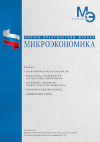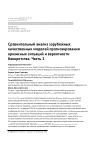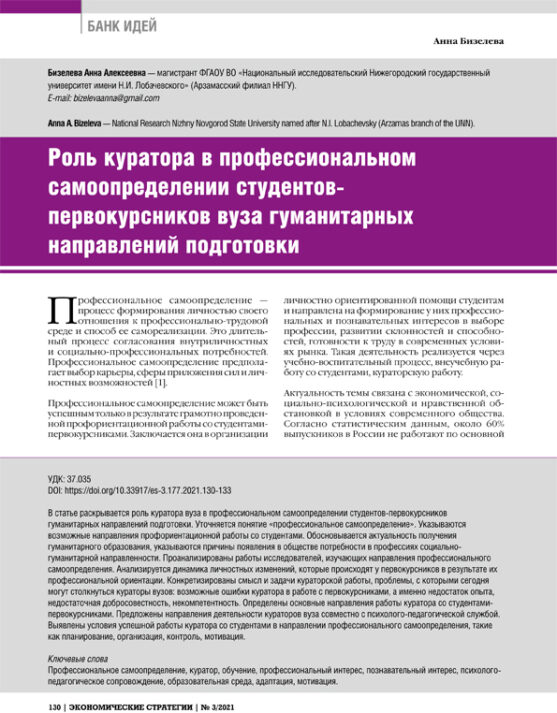Comparative analysis of foreign qualitative models for forecasting crisis situations and bankruptcy probability. Part 2
DOI: 10.33917/mic-3.122.2025.35-51
The article provides a comparative analysis of foreign qualitative models of bankruptcy forecasting, in particular the models of W. Beaver and D. Duran, with the aim of assessing their applicability to Russian innovative companies. The strengths and weaknesses of the models are considered, as well as the features of their use in the context of Russian reporting under Russian accounting standards (RAS standards). The study presents the results of calculations of financial ratios for 22 Russian mobile operators and telecommunications services (hereinafter referred to as Russian innovative companies) and their comparison with the real financial situation. To assess the accuracy of predictions, the F1 measure was used, the results of which revealed a significant number of inaccuracies in bankruptcy forecasting. Based on the data obtained, the issue of adapting foreign qualitative models of bankruptcy forecasting to Russian economic realities and taking into account the industry specifics of Russian innovative companies in their research is considered.
References:
1. Decree of the Government of the Russian Federation dated April 15, 2014 No. 328 (as amended on June 10, 2022) «On Approval of the State Program of the Russian Federation «Development of Industry and Increasing its Competitiveness». URL: https://base.garant.ru/70643464/
2. Federal Law «On Industrial Policy in the Russian Federation» dated December 31, 2014 No. 488-FZ (latest edition). URL: consultant.ru›document/cons_doc_LAW_173119/
3. Decree of the Ministry of Economic Development of the Russian Federation dated August 11, 2016 No. 219P-AU «On Approval of Methodological Recommendations for the Preparation of Corporate Import Substitution Plans by State Corporations, State-owned Companies, Joint-Stock Companies in whose Authorized Capital the Participation of the Russian Federation exceeds 50 Percent, organizations Implementing investment projects included in the Register of Investment projects in accordance with the decision of the Government Commission on Import Substitution». URL: https://www.garant.ru/products/ipo/prime/doc/71366992/
4. Decree of the Government of the Russian Federation of December 23, 2024 No. 1875 «On Measures to Provide National Treatment for the Procurement of Goods, Works, and Services to Meet State and Municipal Needs, procurement of Goods, Works, and Services by Certain Types of Legal Entities» / Decree of the Government of the Russian Federation of December 23, 2024 No. 1875. URL: https://www.garant.ru/products/ipo/prime/doc/411097447/
5. Strategy for Scientific and Technological Development of the Russian Federation (approved by Decree of the President of the Russian Federation of December 1, 2016 No. 642). URL: // https://www.consultant.ru/document/cons_doc_LAW_207967/
6. Government support for import substitution: programs, subsidies, and tools to help industrial companies. The documents are from the Russian Government. URL: http://government.ru›docs/all/131814/







